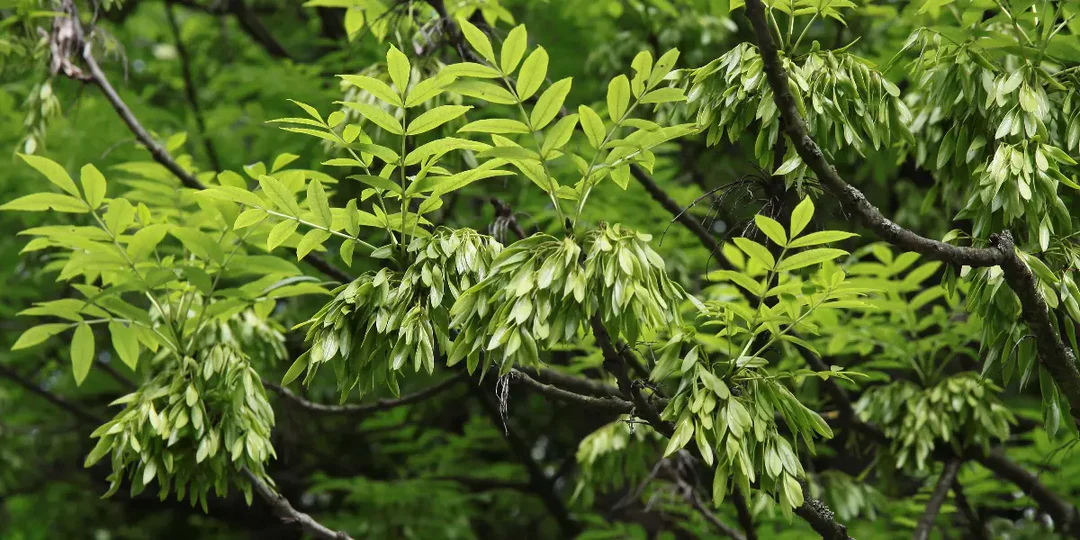As I came to write about Ash it occurred me to how I have a much closer relationship with some trees over others. For me Elder, Alder, Willow, Hawthorn are my heart trees. Birch has to be there too especially as Birch is my birth tree. Ash….seemed more distant to me. After looking into the Ash tree for this post….my view is already changing towards her. I wandered out into the garden to see the two Ash trees that I know of there. One was quite incredible, an example of such resilience. The other is a survivor – a scar most visible on her trunk and yet she thrives.
In the Ogham (depending on the version you use) the days of Ash are from 12th March – 29th March.

So what then about the Ash tree? Let’s have a look…..
Medicinal Uses
Something that does very much interest me is the medicinal use of the Ash.
The ash tree is great when used against joint pain. Its leaves, once transformed into a decoction , infusion or mother tincture , release anti-inflammatory compounds that act directly on inflamed areas of the body, thus reducing pain. Scientific studies have also demonstrated the effectiveness of these compounds. According to research published in the Journal of Ethnopharmacology , taking ash extract significantly relieves osteoarthritis , a major cause of joint pain. This particular study demonstrates the validity of past traditions that are passed down from generation to generation. (source)
“The traditional use of ash in the treatment of joint pain is no longer in doubt. The active compounds released by this plant are a powerful ally against inflammation and therefore, an effective weapon in the fight against joint pain. ”
Dr. François Couplan, ethnobotanist and specialist in medicinal plants.
The leaves are gathered in June, well dried, powdered and kept in well sealed jars. The fruits, called the Keys, will keep for a year if gathered when ripe.
Dioscorides said, “The leaves of the tree are so great they can be used against serpents….” Many old superstitions are connected to ash trees. They have been said to cure warts and other ailments brought on by witches and evil spirits. An ancient Greek creation story says humans were formed from Ash and Oak trees.
Ash Tree (Qin Pi) has been used in Traditional Chinese Medicine for over 2,000 years and is referenced in one of the first texts of Chinese medicine, The Divine Farmer’s Materia Medica.
Modern Western studies have shown that ash bark inhibits pathogenic microorganisms, reduce inflammation, relieves pain, treat cancer, fights oxidation and protects nerves and blood vessels.
The compound esculetin found in the bark is sedating, antitussive, anti-inflammatory, anticoagulant, expectorant and antiasthmatic. It is also a coumarin derivative showing chemopreventive and chemotherapeutic abilities. It is being studied for its usefulness in treating diabetic complications. (source)
Folklore / symbology
Ash is a symbol of mastership and power. The leaves are said to attract love and prosperity. If you sleep with them under your pillow you will have psychic or prophetic dreams. Ash is used to cure loneliness of the human spirit. Ash, Oak and Hawthorn make up the triad of powerful fairy trees. Interesting that the Ash in the grove here stands with a Hawthorn – I’ve always called that area “Fairy Corner”.
Three of the Five great trees of Ireland were Ash: the Tree of Uisnech, the Tree of Tortu and the Tree of Dathi. These trees were the guardians who protected the sovereignty of the land. The Celts themselves destroyed them in 665 CE rather than let the encroaching Christians have access to them.
Ash is an important symbol in Norse mythology. It is called Yggdrasil, and is Norse World Tree called the Cosmic Ash. It is said to span the universe and have roots that delve deep into the earth. The ancient Druids said the Ash spanned the world around us and was within each of us. Druid wands were made of ash because of its straight grain. They were used for healing and general magic.
Ash Dieback
Ash trees are super important for supporting other species and support up to 1000 other species! Sadly it can often suffer from a fungal disease called “Ash Dieback”, which spreads readily and is a huge threat to Ash trees and forests. As I learn about trees and their uses I think it’s also really important to understand what acts as a threat to the trees themselves. We at least two Ash trees here in the garden , one very tall one and another good sized one around the grove. Keeping an eye on the trees here in the garden and also in the surrounding area will be helpful in maintaining them and and thus it’s important to have an understanding of what the problem looks like.

